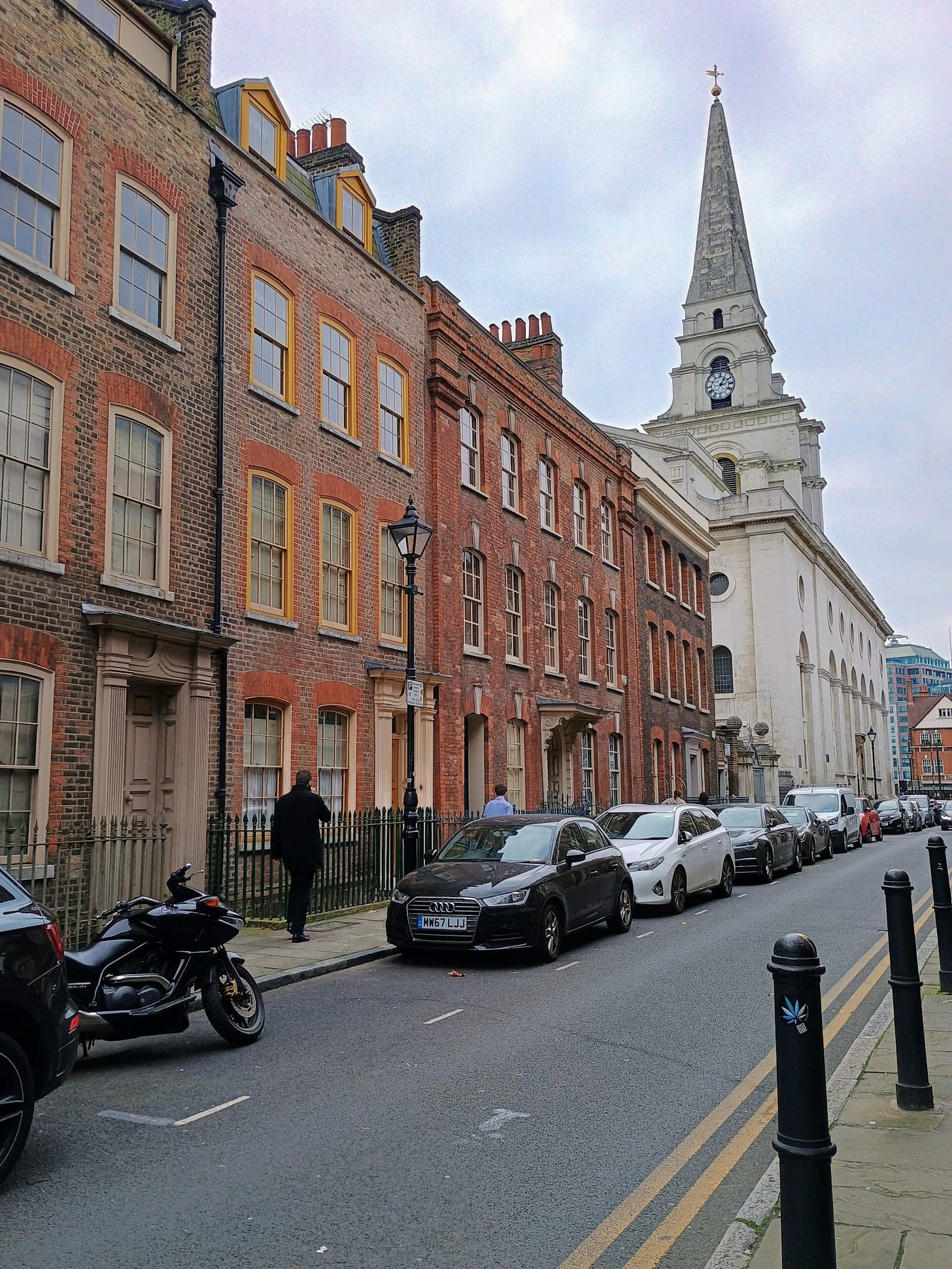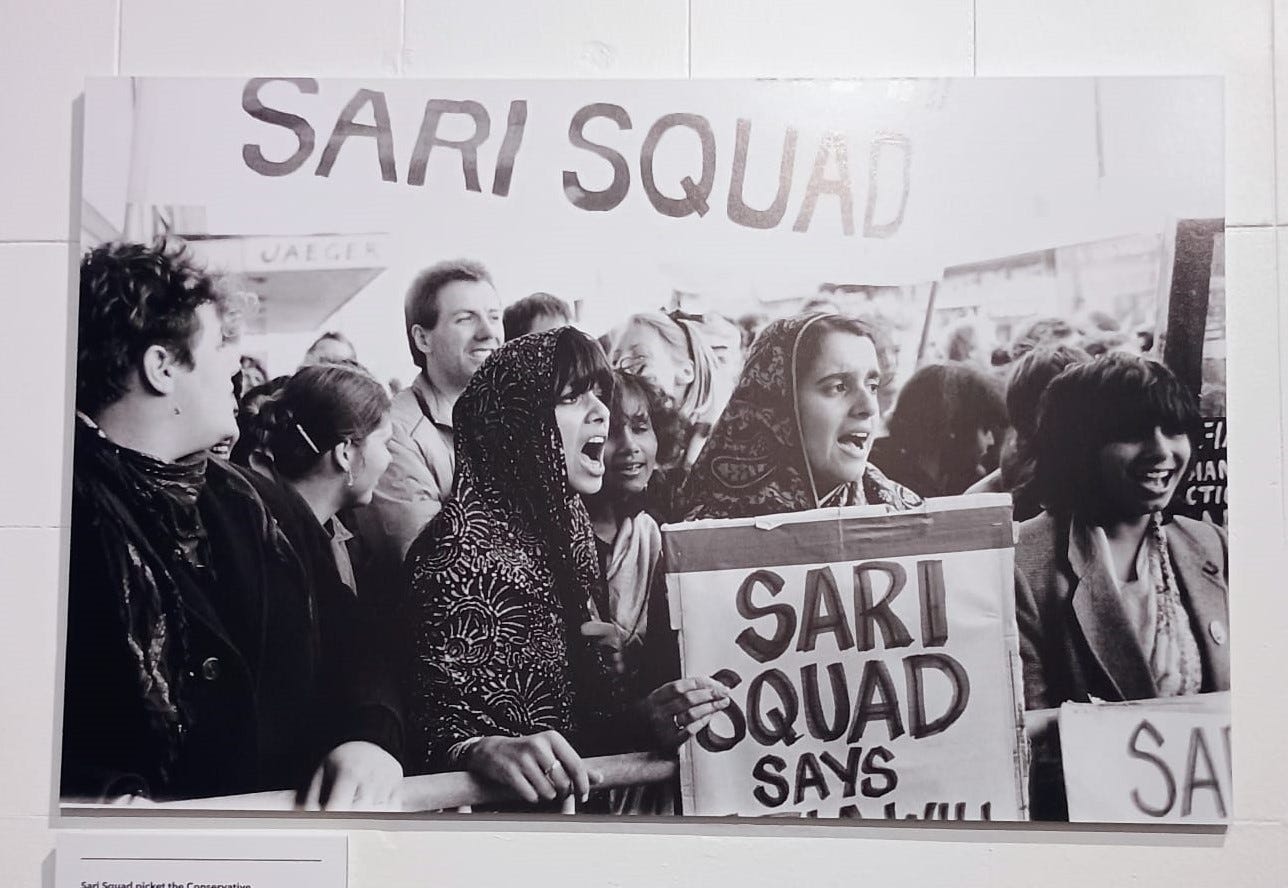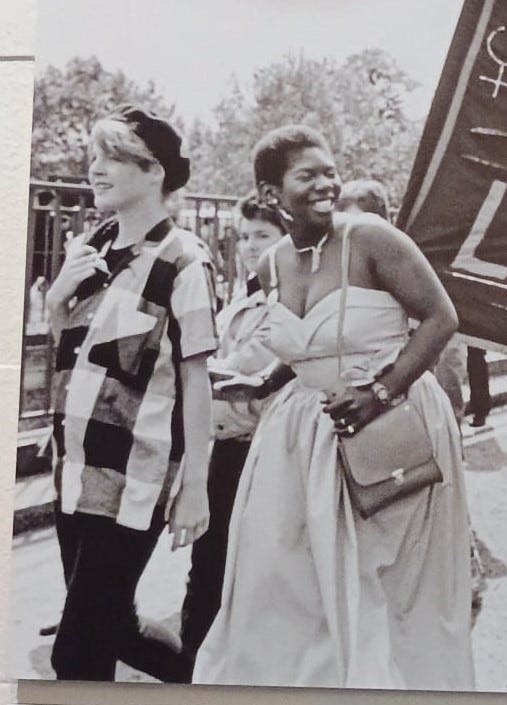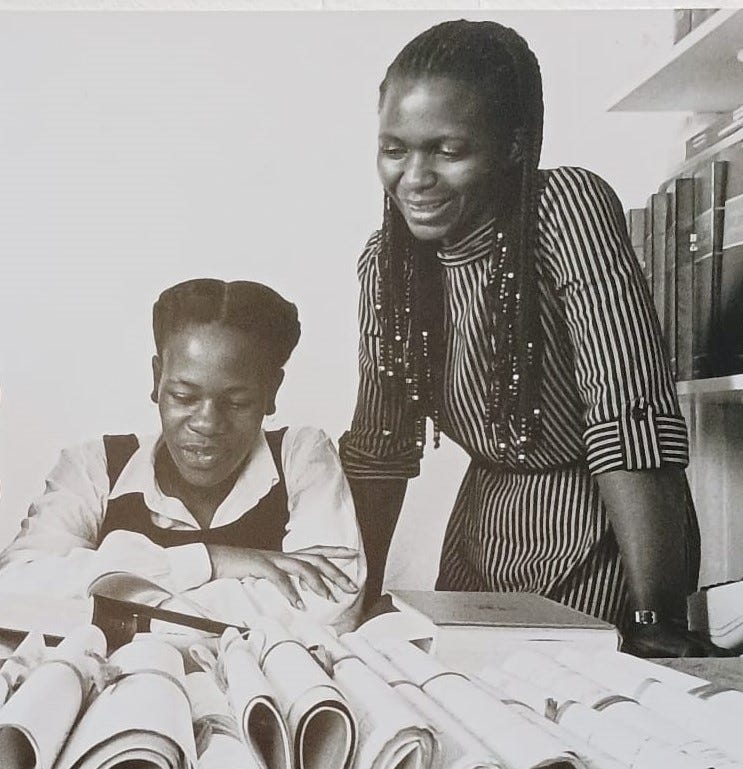I went to Bishopsgate and saw portraits of women, by women
Format, Amy Levy, holes in time, and a ghost
One day in Spitalfields I found myself standing outside a pub, thinking about the poet Amy Levy. After reading her poems set in East London, I can’t look at the street signs in E1 without remembering her.
Amy Levy was a prolific writer, a journalist, a young Jewish Victorian woman who took herself seriously as a working artist. (I’ve written about her before, here and here.) From her poems it sounds as if she liked to walk the streets of Bloomsbury and catch an omnibus to the East End, noticing every detail unfolding around her – the sellers hawking watercress, the barrel organ player, the newspaper man. She wrote, “The hurrying people go their way,
Pause and jostle and pass and greet.”
I thought of a dear friend and the time we both dashed from Liverpool Street to Homerton, processing at top speed, pointing out everything. Amy Levy could be here, moving with purpose, neat and small and exploding with intelligence, if she wasn’t centuries away.
Every other wall here is covered in posters, collages of dashing, provocative stickers and graffiti: ART PLAY. EQUAL. MPYWS. STORIES ROUND THE FIRE. Some shops have layered fronts: Bengali, Arabic and Turkish signs overlaying Victorian stencils. Buildings moored in time, living many lives. A gardener opened his van and spilled out a bunch of garden cuttings all over the pavement, ash leaves that smelled like the woods. I started to imagine that the world was punched with holes, and through the holes I could get glimpses of the past carrying on all around. Don’t quote me; I was low on sleep.
After a while I headed into the churchyard, through the wrought-iron gates and – felt someone following me, walking close behind. A distinct feeling, a quiet presence. But no one was there.
Two facts.
1. The pub where I started this little journey was The Ten Bells, which is (legends tell the tourists) extremely haunted; some of the Ripper murders are said to have taken place there in the late 1880s, at the same time Amy Levy was writing poems about street life in the East End. The Ten Bells gets pointed out on all the ghost walks. When I learned this later, I felt depressed; violence against women used to sell historical products. Those women deserved better than to be a spooky story.
2. Around this time I was researching my great-grandfather, who is so mysterious that I knew nothing about him except his name. I’ve found out since that in 1880 his family lived in Shoreditch, a few minutes away from Spitalfields on foot, at the same time Amy Levy was alive and writing. There was a tragedy in their house, but I choose not to say what it was.
*
To get a break from the ghosts, I headed to the Bishopsgate Institute. I’ve been keeping an eye on the number of women artists in the galleries I visit, so I was pleased to see that Bishopsgate is hosting an art exhibition of photography by women, which has been extended from its original run: Format at 40. Due to being here, there and everywhere, I hadn’t visited in years, so I got to experience Bishopsgate as if for the first time. It’s like a Victorian swimming baths, with echoing corridors paved in deep green floral tiles. I expected at any moment to hear water lapping.
Format was an agency that represented only women documentary photographers. Opening in 1983, it grew from a partnership between photographers Val Wilmer and Maggie Murray, who realised that they would never be invited to join any of the ‘boys’ club’ agencies available. They set up an all-women agency. If this was separatist, it was simply because everyday sexism in the 1980s was brutal; a Posy Simmonds cartoon from around the same time imagines if men at work were treated the same way as women. “Looking gorgeous as usual,” says the boss.

The ten Format photographers got out of the framework of looking gorgeous and pleasing the boss, and they excelled themselves. The walls at Bishopsgate are lined with photographs, ranging from crowd scenes to intimate portraits, many featuring the sort of women who don’t get to be on montages of the 80s and 90s.
A few images were immediate standouts. Pam Isherwood’s Lesbian Strength March captures a moment of pride – Black lesbians hoisting a sign, having the time of their lives. But the march looks under-attended; what were they risking by turning out? Raissa Page’s Three Barristers is a glimpse of Black women lawyers at work, ruling their own room. It’s remarkable how these subjects open up and relax in front of the camera; I feel as if I’m sharing a room with them, rather than looking at slides of their lives. As if I’m looking straight through one of those holes into the past…
There’s a running theme of women/queer people in charge of their own lives, bodies and work. The Sari Squad picketing the Tory party conference is a thought-provoking image of struggle. At a time when the National Front was active and Asian women were very vulnerable, these women took the risk not to compromise or play down their appearance. They showed up as themselves.
Portraits: a handsome stevedore, photographed by Jenny Matthews; Sue Batton’s portrait of London’s first woman firefighter; Peggy Braithwaite, lesbian lighthouse-keeper, surrounded by machinery. Suzanne Roden’s portrait of Gail Ann Dorsey has a lovely simplicity and intimacy; I wonder about the high-contrast light and shade balance and the story it tells about Dorsey. I did feel a divide between the respectable ‘first women’ whose faces lined the walls, and the anonymous workers who were pictured sewing or working in shipyards. But that’s queer history all over.
At the same time, a few images showed society’s most vulnerable – girls playing on council estates in London, young people in Southampton, smoking cigarettes in the park. I was touched to see struggles for a better society, moments of joy, paired up with glimpses of these children living their lives. Queers who made a name for themselves, side by side with anonymous protestors. I wonder what happened to them all?
Amy Levy wrote:
STRAW in the street where I pass to-day
Dulls the sound of the wheels and feet.
’Tis for a failing life they lay
Straw in the street.Here, where the pulses of London beat,
Someone strives with the Presence grey;
Ah, is it victory or defeat?The hurrying people go their way,
Pause and jostle and pass and greet;
For life, for death, are they treading, say,
Straw in the street?
Note: Bishopsgate is the most welcoming museum I’ve been to so far. It’s good to be met as you are.
Format at 40 is on indefinitely.
If you have an idea for an exhibit or artist you want me to write about, leave a note in the comments.





![[Image unavailable: Portrait of Amy Levy.] [Image unavailable: Portrait of Amy Levy.]](https://substackcdn.com/image/fetch/$s_!QiiO!,w_1456,c_limit,f_auto,q_auto:good,fl_progressive:steep/https%3A%2F%2Fsubstack-post-media.s3.amazonaws.com%2Fpublic%2Fimages%2F2b7c9547-9bf1-4e11-80e7-9e8a461bd1ea_333x500.jpeg)



